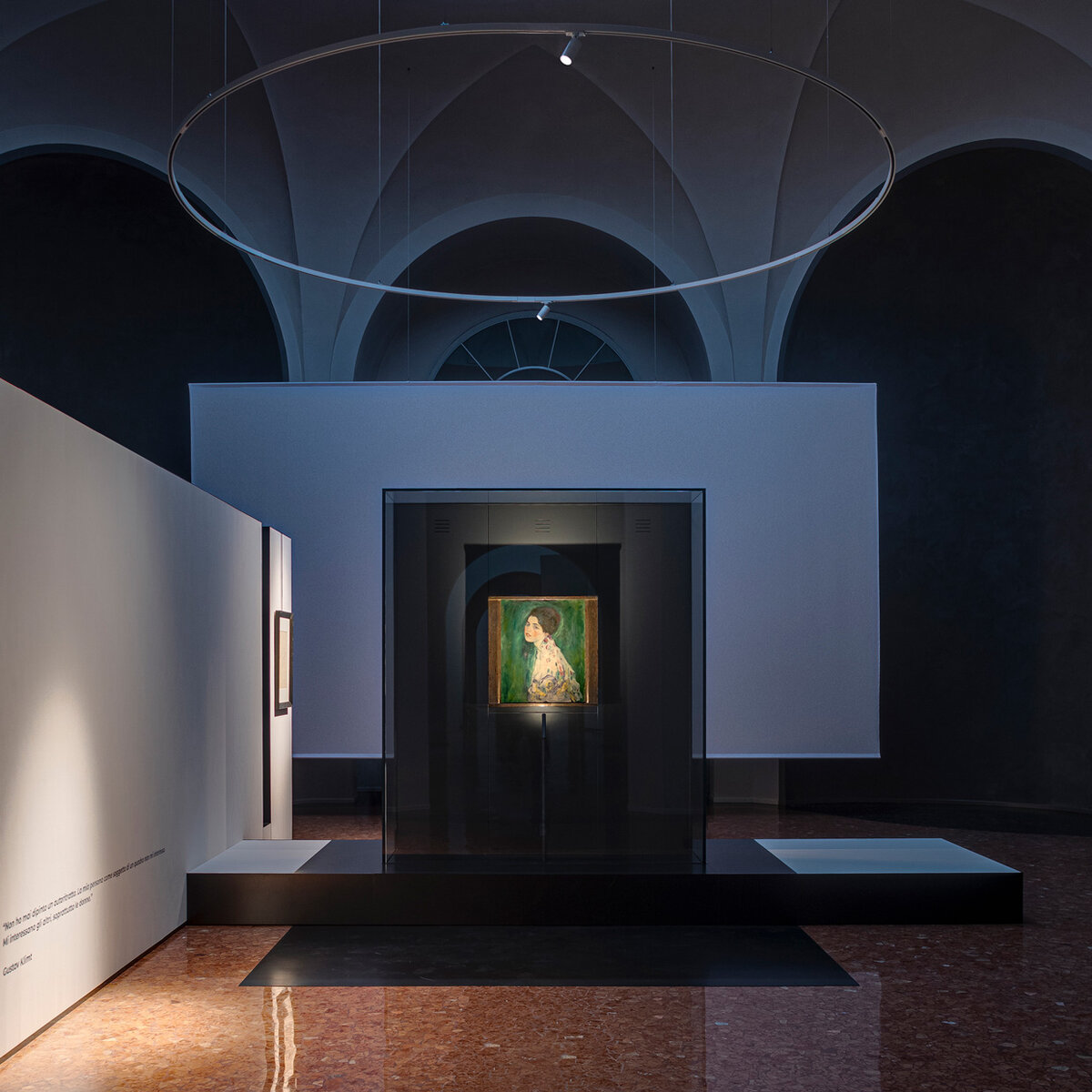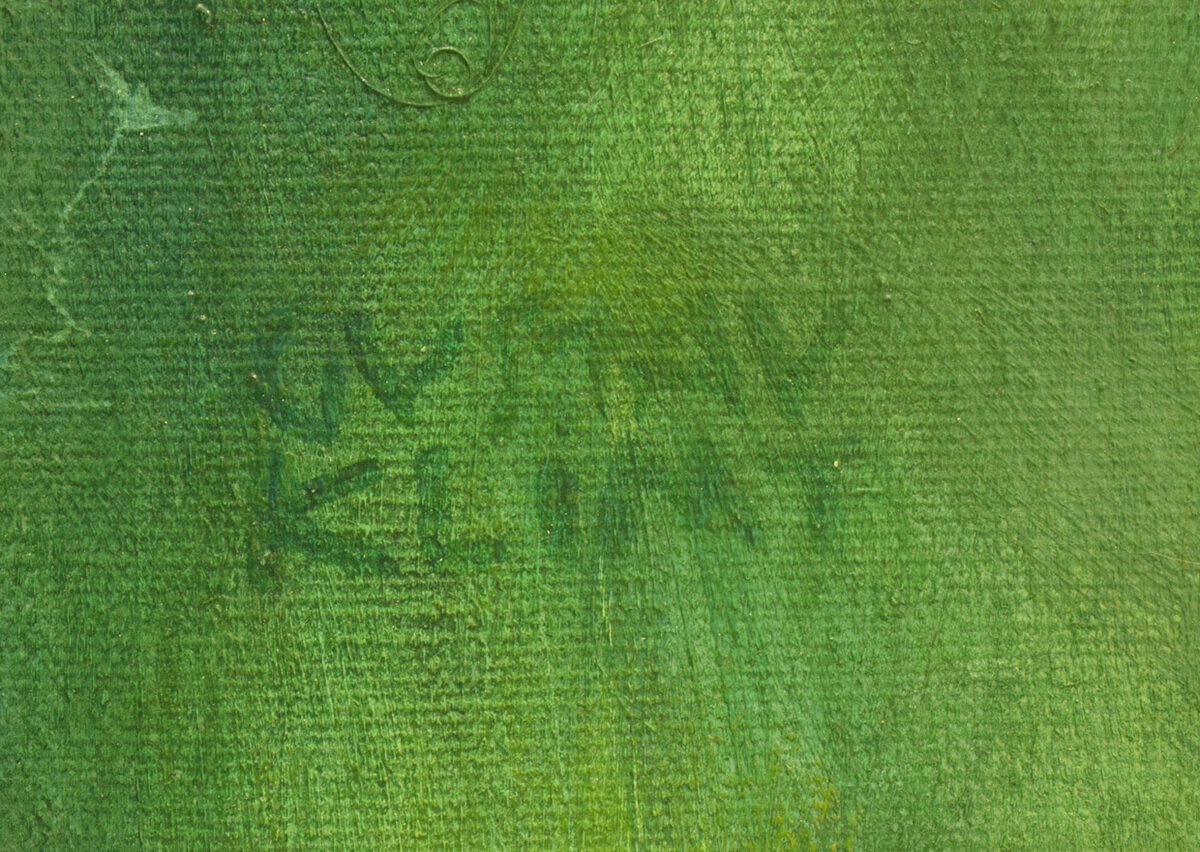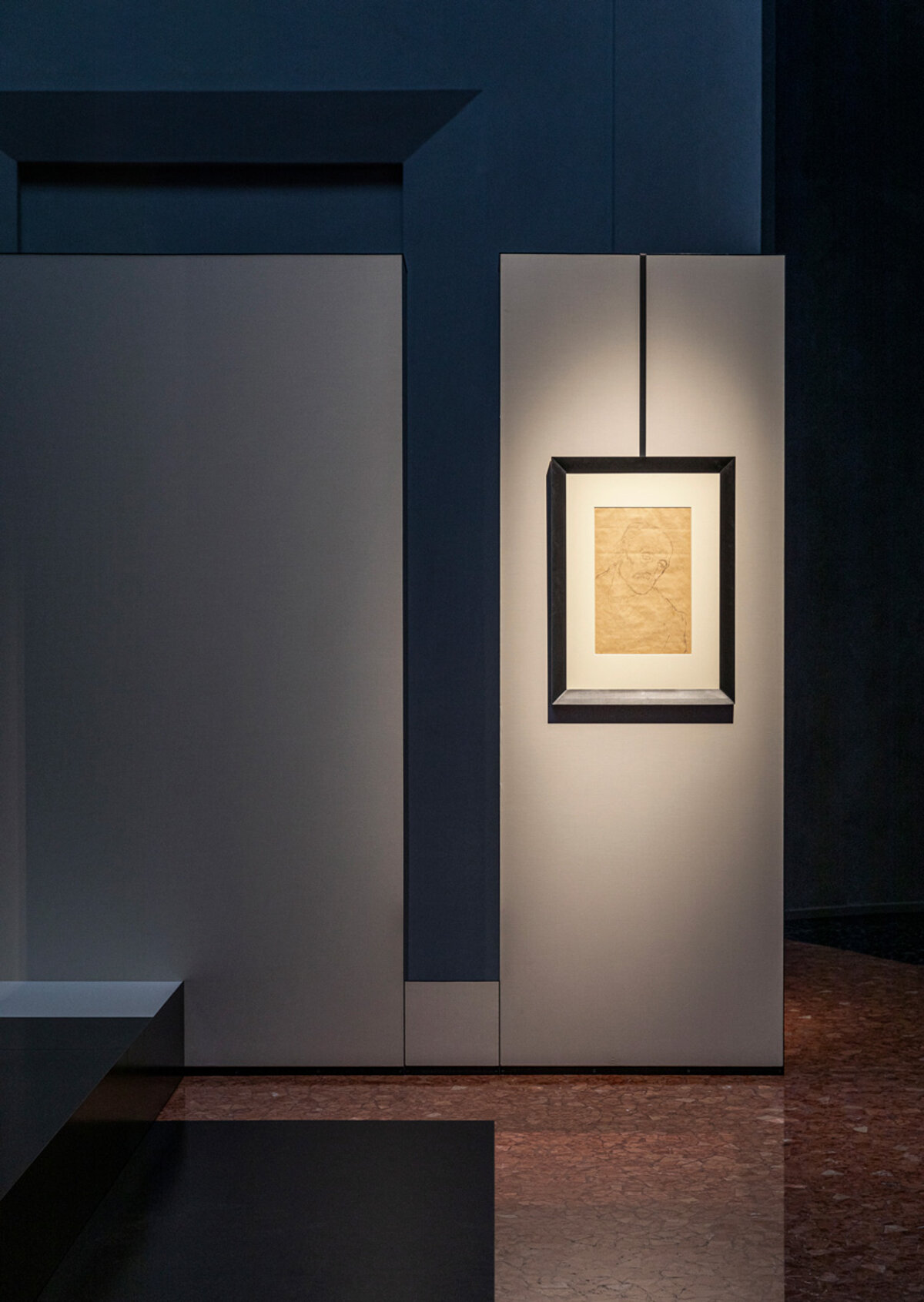
It is in these circumstances that we interrogate about the meaning of artificial light. In what light did Gustav Klimt paint “Portrait of a Lady”? And how would he have illuminated his masterpiece?
We approached the canvas with delicacy and philological coherence. Considering the set-up, we have reduced the shadow of the painting frame as much as possible, made the reflections of the oil paint invisible and represented the colours in a realistic way.
It is one of those works that we refer to as absolute light. The conceived lighting system is the result of the least possible lighting intervention. Just pure light.
A very delicate light on the back of the canvas to highlight the signs of aging, the seals, the notes, and a small projector in the shape of a microphone for the painting as a symbolic attempt to give the Lady her voice back after years of silence and darkness.
In the space, a delicate indirect light to capture the beauty of the gallery.
© Galleria Ricci Oddi e Fondazione Klimt













